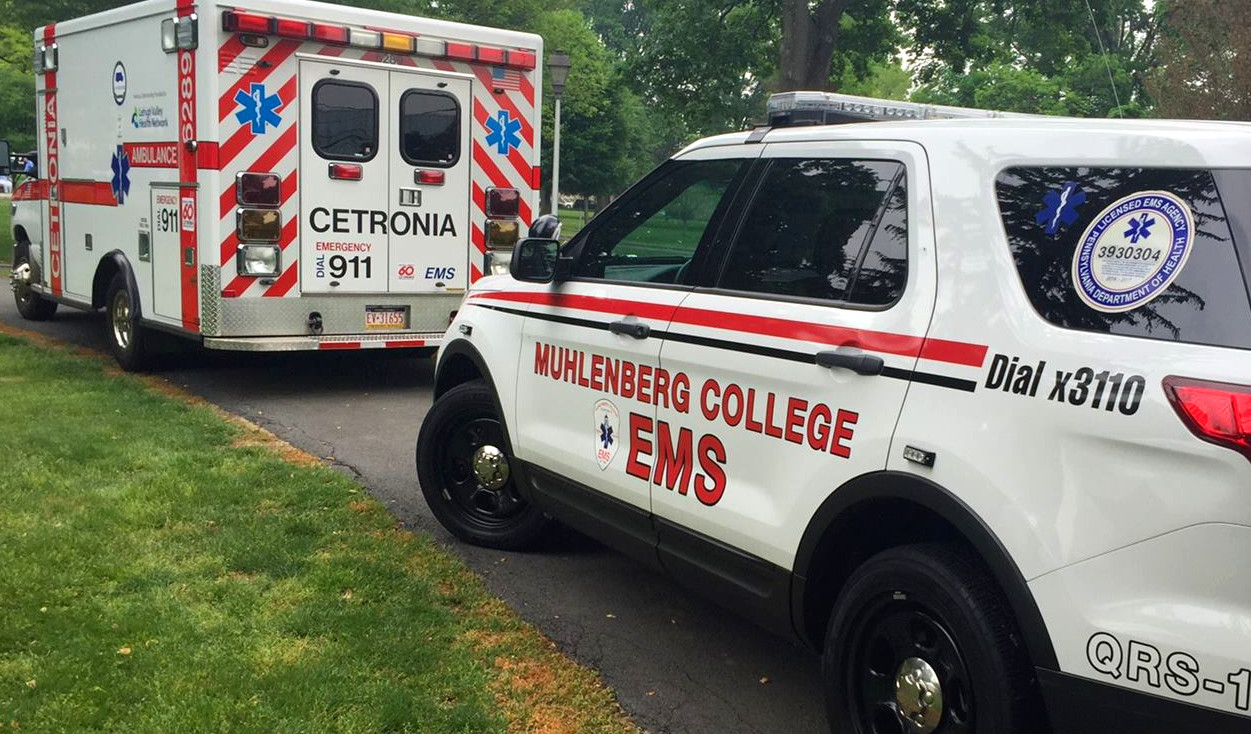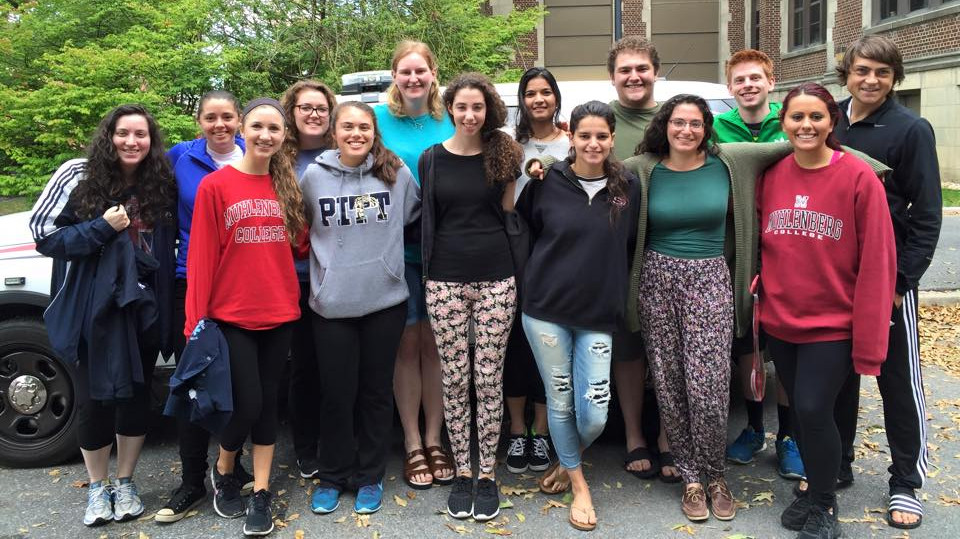Frequently Asked Questions
How do I call MCEMS?
Call Campus Safety at (484) 664-3110 and ask for MCEMS to be dispatched. The dispatcher will ask you some questions in order to make sure the right resources are sent to the right place.
How long does it take EMS to arrive?
On-duty EMTs are paged by the Campus Safety dispatcher using a radio system and respond from wherever they are on campus. Our average response time is 4 minutes from receiving the call.
How many calls do you respond to?
It tends to flucutate, but we respond to roughly 200 calls per year. We also serve the campus community by conducting standbys.

When does MCEMS operate?
As of March 2016, MCEMS operates 24 hours during the school year. During the daytime, Campus Safety dispatches MCEMS via the mobile app IamResponding when they receive requests for medical assistance on campus. During the hours the Health Center is not open (5:00 pm to 8:00 am and 24 hours on the weekends), MCEMS operates a duty crew that responds to requests for medical assistance.
Why does Campus Safety show up on medical calls? Am I in trouble?
Campus Safety officers respond along with EMS to most calls for our protection while we are working. Additionally, they can often transport patients who do not require an ambulance to the hospital at no cost to the student.
Are most of your patients just intoxicated students?
While it is true that we respond to students who need medical assistance related to alcohol consumption, they do not make up the majority of our calls. Typically, they make up anywhere from 10-25% of our calls.
Will my parents or friends find out that I went to the hospital?
EMS providers are not permitted to disclose any information about their patients. Your parents may find out if they receive a bill from the hospital, or, if you are a minor (under the age of 18), we must usually obtain parental consent before we can begin evaluation or treatment.
What will happen when I call MCEMS? Will I have to go to the hospital?
Not necessarily. While we are completing our assessment and on-scene treatment, we will discuss your options for receiving further care. These may include being transported to a local emergency room by ambulance or with a Campus Safety Officer, or getting a ride to a nearby urgent care facility. You may not need to be transported at all if we are able to resolve your problem on scene.
We will generally discuss these options with you and allow you to choose the one that you feel most comfortable with. If the situation requires, MCEMS will coordinate with Allentown EMS to get an ambulance to the scene for transportation to a hospital. If you are not transferred to an ambulance crew, you will sign a document stating that you refused further medical attention, even if you are going to a hospital by other means.
There are certain situations in which EMTs are required to transport patients to an emergency room. These include patients with an altered mental status or are suicidal who cannot legally refuse care, or who have other critical conditions.
While MCEMS does not bill for its services, Allentown EMS bills non-residents and Cetronia Ambulance Corps does bill its patients. The exact cost will vary based on the services they provide and your insurance coverage.

What is it like to be a member of MCEMS?
Our membership consists of 24 EMTs and 12 members of our Training Corps. Each member is required to ride a certain number of 18- or 24-hour shifts per month, usually 1-3 depending on the number of days and current membership size and ranks. Each shift will have a Crew Chief, a senior member of the organization who holds overall responsibility for the calls. Usually, there will be one or two additional EMTs, and often a member of the training corps.
Many of our members have been cleared to drive QRS-1, our response vehicle, by taking an Emergency Vehicle Operator Course (EVOC) as well as going through our own familiarization program. We hold monthly training drills at which we review and practice skills, learn new protocols, and do team building exercises.
We allow our members to be anywhere on campus while they are on duty. Each member carries a radio and a pager to be alerted to calls and for communication with the rest of the duty crew.
If this sounds appealing to you, come find us at one of our standbys, email us, or learn how to apply for membership!
